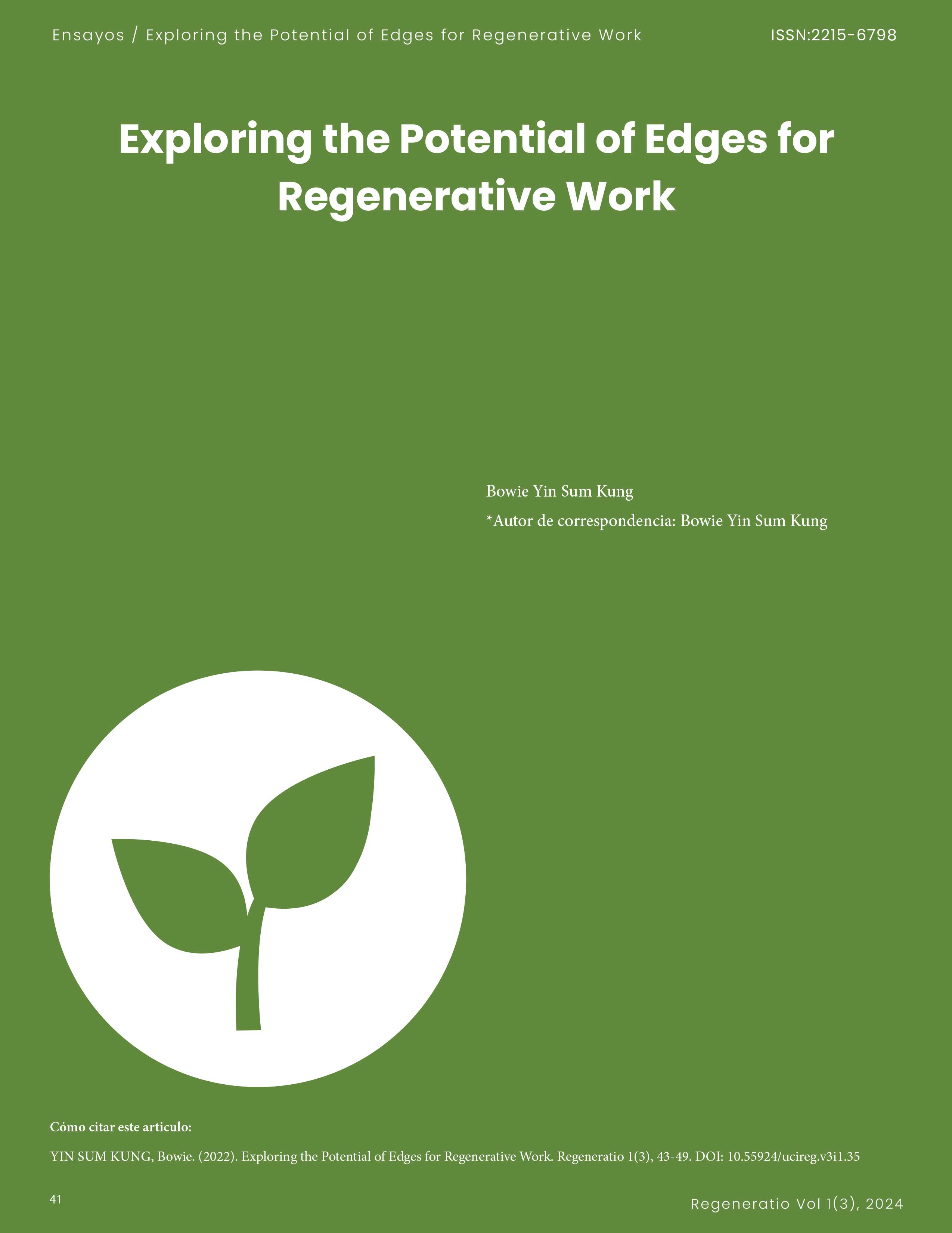Exploring the Potential of Edges for Regenerative Work
DOI:
https://doi.org/10.55924/ucireg.v3i1.35Abstract
This paper delves into the concept of edges as spaces of potential regeneration across ecological, social, and psychological domains. By examining examples such as riparian buffers and sociocultural boundaries, the paper elucidates how edges serve as sites of increased
biodiversity, cultural diversity, and psychological transformation. Drawing on insights from
ecotones, sociotones, and psychotones, the paper highlights the importance of understanding and harnessing the dynamics of edges for fostering resilience, innovation, and healing. Ultimately, it advocates for a holistic approach to regeneration that embraces the interconnectedness of
ecological, social, and psychological systems, offering pathways toward a more sustainable and harmonious coexistence.
References
East, May. (2019). “Maximising the Edges of Natural and Human Systems: The Case for Sociotones” Sustainability 11(24): 7203. https://doi.org/10.3390/su11247203
Gross, S. (2019). Lemon shark pup (Negaprion brevirostris) in mangrove forest which acts as a nursery for juveniles of this species. Eleuthera, Bahamas. [Picture]. https://www.naturepl.com/stock-photo/lemon-shark-pup-(negaprion-brevirostris)-in-mangrove-forest-which-acts-as-a/search/detail-0_01617285.html
H3Uni. (2023). Seeing and thinking in Three Horizons. [Picture] https://www.h3uni.org/foundational-insights/seeing-and-thinking-in-three-horizons/
Köhler, R. (2021) Landscapes and Labscapes: Exploring the Lab-Field Border in Biology. University of Chicago Press: USA.
Kolasa, J., Zalewski, M. (1995). Notes on ecotone attributes and functions. In: Schiemer, F., Zalewski, M., Thorpe, J.E. (eds) The importance of aquatic-terrestrial ecotones for freshwater fish. Developments in Hydrobiology, vol 105. [Picture] Springer, Dordrecht.
https://doi.org/10.1007/978-94-017-3360-1_1
Shabel, A. B. (2010). Brain Size in Carnivoran Mammals that Forage at the Land-Water Ecotone, with Implications for Robust
Australopithecine Paleobiology. Human Brain Evolution, 173–187. doi:10.1002/9780470609880.ch9
Sharma, D. (2022) How do riparian buffers protect the environment? [Musim Mas Blog]. https://www.musimmas.com/how-do-riparian-buffers-protect-the-environment/

Additional Files
Published
How to Cite
Issue
Section
Categories
License
Copyright (c) 2024 adminuci adminuci; Bowie Yin Sum Kung

This work is licensed under a Creative Commons Attribution-NonCommercial-ShareAlike 4.0 International License.
Contributions to the journal are made under the terms of the Creative Commons Attribution-NonCommercial-NoDerivatives 4.0 International License (CC BY-NC-ND 4.0).
The use of this type of license grants a user permission to share — copy and redistribute the material in any medium or format, as long as:
- Proper attribution or recognition is given to the author(s) of the licensed material and any other person designated for attribution or recognition, in any reasonable manner requested by the Licensor.
- A link to the license is provided, and it is indicated if changes have been made. This can be done in any reasonable manner, but not in a way that suggests that you or your use are endorsed by the Licensor.
- The material is not used for commercial purposes.
- The original content of the material is not modified. If remixing, transforming, or creating from the material, the modified material cannot be distributed.






